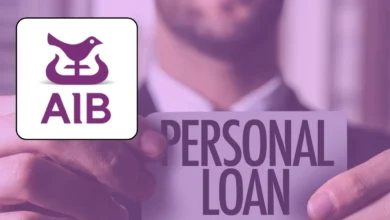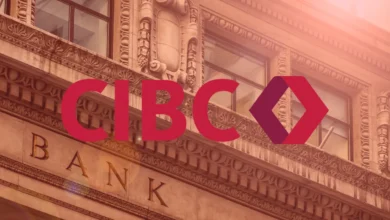Get the Details: Scotiabank Guyana Loan Made Simple
The Scotiabank Guyana Loan provides tailored solutions for every financial need.
Whether you’re looking to buy a home or grow your business, this loan offers support.

Scotiabank understands that everyone has different goals.
That’s why the loan adapts to your life.
With a variety of loan types available, Scotiabank ensures there’s a solution for you.
Each loan is crafted with your financial well-being in mind.
You can choose the payment terms, loan amount, and timeline that suit you best.
Financial freedom is within reach.
Scotiabank Guyana Loan empowers you to achieve your dreams.
The loan process is straightforward, and the benefits are vast.
As your trusted financial partner, Scotiabank offers you the tools to succeed.
Whether you’re a first-time borrower or seeking additional financing, the Scotiabank Guyana Loan has you covered.
The application process is simple, and approval is quicker than you might think.
With competitive rates and a commitment to helping you, Scotiabank ensures your financial future is secure.
Let’s explore how you can maximize your chances of obtaining the Scotiabank Guyana Loan.
Additionally, we’ll walk you through the detailed steps to successfully apply for it.
Whether for personal or business needs, this loan could be the key to unlocking new opportunities.
Maximizing Your Chances of Getting a Scotiabank Guyana Loan
To boost your chances of securing a Scotiabank Guyana Loan, it’s essential to be prepared.
Follow these steps to enhance your eligibility:
- Check Your Credit Score
Ensure your credit score is in good standing. A higher credit score increases your chances of approval. If needed, work on improving it by paying off existing debts. - Organize Your Financial Documents
Have your financial records ready. This includes income statements, tax returns, and proof of assets. Scotiabank requires these to evaluate your financial situation. - Reduce Existing Debts
Lenders prefer applicants with manageable debt. Pay off any outstanding debts before applying. This not only improves your credit score but also demonstrates financial responsibility. - Stable Employment
Having a steady job or consistent income stream shows lenders you can manage loan payments. Provide proof of employment or income during the application. - Choose the Right Loan Amount
Only request the amount you truly need. Avoid over-borrowing, as asking for too much can reduce your chances of approval. - Research Loan Options
Familiarize yourself with the different Scotiabank Guyana Loan options. Understand which loan best fits your needs and be clear about your purpose for borrowing. - Consult with a Loan Officer
Schedule a meeting with a Scotiabank loan officer. They can guide you through the process and offer personalized advice to improve your chances.
How to Apply for the Scotiabank Guyana Loan: Step-by-Step Guide
Applying for the Scotiabank Guyana Loan is a structured process that requires preparation.
Here’s a detailed breakdown of the steps involved, along with important tips to make your application smoother:
Step 1: Research and Choose the Right Loan
Before you start the application process, it’s important to understand the loan options available. Scotiabank Guyana offers various loans, such as home loans, car loans, personal loans, and business loans. Review the terms, interest rates, and repayment options to find the one that best fits your needs.
Subtopics to consider:
- Home Loans: Best for individuals looking to purchase or renovate a home.
- Car Loans: Ideal for financing a new or used vehicle.
- Personal Loans: Perfect for covering medical, educational, or other personal expenses.
- Business Loans: Tailored for entrepreneurs looking to expand or start their business.
Step 2: Gather Your Documentation
You’ll need several key documents for the application. Scotiabank uses these to verify your financial situation and determine your eligibility.
Documents required:
- Proof of Identity: Government-issued ID like a passport or driver’s license.
- Proof of Address: Utility bills, lease agreements, or property ownership documents.
- Income Verification: Recent pay stubs, employment letters, or bank statements.
- Tax Returns: Usually for the past two years to show your income consistency.
- Asset Proof: For large loans, Scotiabank may require proof of your assets such as properties or savings accounts.
Step 3: Submit an Application
Once you’ve gathered your documents, you can apply through Scotiabank’s online platform or by visiting a local branch.
Online Application:
The online process is straightforward. Simply fill in your personal details, upload your documents, and submit the form. You’ll receive a confirmation email, and Scotiabank will begin reviewing your application.
In-Branch Application:
If you prefer a face-to-face interaction, visit your local Scotiabank branch. A loan officer will guide you through the process and ensure that all documents are in order.
Step 4: Wait for Approval
The approval process can take a few days to a couple of weeks, depending on the loan type and amount. Scotiabank will assess your credit score, financial history, and the documents provided.
Tips during this phase:
- Stay available for any follow-up calls or requests for additional documents.
- Make sure all the information provided is accurate to avoid delays.
Step 5: Review the Loan Terms
Once approved, you will receive the loan offer, which includes details on the interest rates, payment schedule, and terms. Take the time to carefully review the terms before accepting the loan.
Key points to review:
- Interest Rate: Is it fixed or variable?
- Payment Schedule: Does it align with your income flow?
- Loan Term: Is it short-term or long-term? Consider the implications of each.
Step 6: Sign the Agreement
After reviewing and agreeing to the terms, you will sign the loan agreement. This step legally binds you to the loan terms, so ensure you’re comfortable with everything outlined.
Step 7: Receive the Funds
Once the agreement is signed, the funds will be disbursed to your account. You can now use the funds for the purpose outlined in your application, whether it’s buying a home, a car, or expanding your business.
When you click on the button you will be redirected to another website.
Conclusion
The Scotiabank Guyana Loan provides a versatile and reliable solution for individuals and businesses seeking financial support.
With customizable loan options, flexible payment terms, and a straightforward application process, Scotiabank ensures you’re equipped with the tools to achieve your financial goals.
By following the steps outlined and maximizing your chances with preparation, you can secure the loan that meets your needs.
Whether it’s a personal loan for home improvement or a business loan for expansion, Scotiabank Guyana Loan offers the flexibility you require.
Take control of your financial future today with a loan that adapts to your life and ambitions.
Frequently Asked Questions (FAQs)
- What types of loans does Scotiabank Guyana offer?
Scotiabank offers home loans, car loans, personal loans, and business loans tailored to various financial needs. - How long does it take to get a loan approved?
Loan approval typically takes between a few days and two weeks, depending on the type of loan. - What documents are needed for a Scotiabank Guyana Loan?
You’ll need proof of identity, proof of address, income verification, tax returns, and potentially asset proof for larger loans. - Can I apply for a loan online?
Yes, Scotiabank offers an online application process that is quick and easy. - What credit score is required to get a loan?
While specific scores may vary, having a good credit score improves your chances of approval. - Can I choose my loan amount?
Yes, Scotiabank allows you to select a loan amount based on your financial needs and eligibility. - Are interest rates fixed or variable?
Scotiabank offers both fixed and variable interest rate options, depending on the loan type. - What happens if I miss a loan payment?
Missing a payment may result in late fees and impact your credit score. Contact Scotiabank if you foresee any payment issues. - Can I repay my loan early?
Yes, but some loans may have early repayment fees. Review your loan terms for details. - How do I check the status of my loan application?
You can check the status by logging into your Scotiabank account online or by contacting your loan officer. - What fees are associated with Scotiabank loans?
Fees may include processing fees, late payment fees, and early repayment penalties, depending on the loan type. - Can I apply for multiple loans at once?
Yes, but your approval depends on your financial standing and ability to repay. - How do I increase my chances of loan approval?
Maintaining a good credit score, reducing existing debt, and providing thorough documentation will increase your chances. - What’s the difference between secured and unsecured loans?
Secured loans require collateral, like a house or car, while unsecured loans do not, but may have higher interest rates. - Can I negotiate the loan terms?
Yes, you can discuss and negotiate some loan terms with Scotiabank before finalizing the agreement. - Is there a limit to how much I can borrow?
The loan limit depends on your income, credit score, and the loan type you apply for. - Are there any flexible payment options?
Yes, Scotiabank offers flexible payment plans to suit different financial situations. - Do I need collateral for a loan?
Some loans may require collateral, particularly larger or business loans. - What happens if my loan application is denied?
Scotiabank will inform you of the reasons, and you can reapply after addressing the issues or try for a different loan type. - Can I use the loan for any purpose?
Depending on the loan type, there may be restrictions. Personal loans are typically more flexible, while business loans must be used for business purposes.




